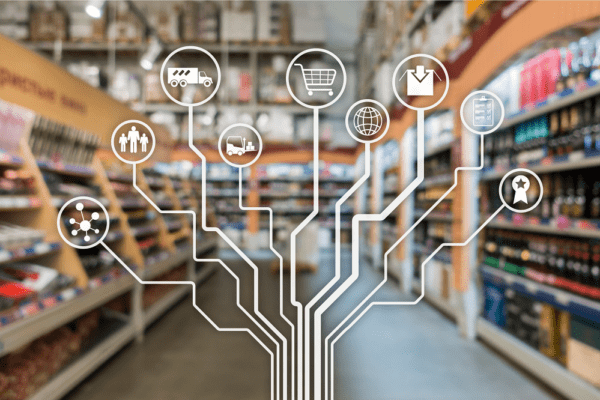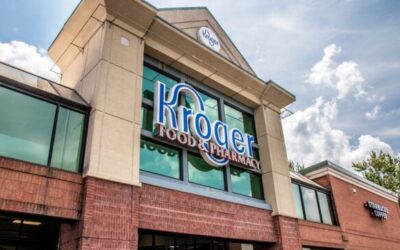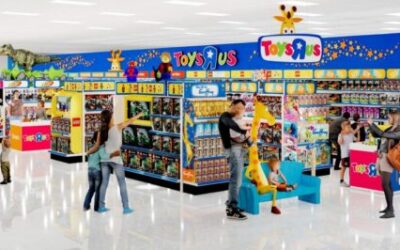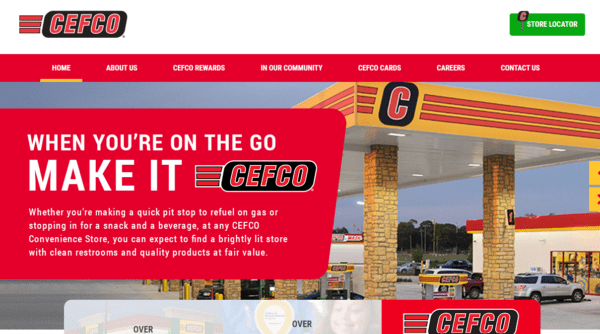Standardized Measurements, Collaboration Crucial to Retail Media’s Continued Growth


Retail media experienced massive growth in 2023 and shows no sign of slowing in 2024. But even as retail media networks have proliferated, ad buyers still are limited in how many they can participate in. The culprit? A lack of standardization across the retail media ecosystem. In fact, a Coresight Research study indicates that most buyers max out at just five to six networks.
That same lack of standardization, combined with siloed data and buying systems, makes it nearly impossible for brands to accurately measure the effectiveness of their retail media investments, particularly in the context of their larger media buys. So while developments like in-store ad placements and bringing in non-endemic ad dollars may be the topics generating buzz, the advance that’s most crucial to retail media’s continued growth will be the decidedly less sexy matter of standardization — the same standardization that other digital ad platforms now routinely offer.
“Retail media did in five years what took Google 14 years, but at 14 years in — when Google reached this level of investment — the Google platform was really good,” said Jeffrey Bustos, VP of Measurement Addressability Data at the Interactive Advertising Bureau (IAB) in an interview with Retail TouchPoints. “Retailers are now demanding large media company dollars, but they are operating almost as a startup in terms of their technological capabilities.
“There’s also a need to make sure that everybody is comparing apples to apples, because unlike other media platforms, within retail media the owner of the first-party data is also the one that is providing the media and the reporting,” Bustos added. “When you’re running a search ad or a Facebook ad, that ad is typically driving people to your DTC website, so you’re able to track conversion. But within retail media it all happens in the same ecosystem, so the idea of ‘grading your own homework’ comes up a lot.”
The IAB is working to tackle that problem. In conjunction with the Media Rating Council, it spent over a year working with leaders across retail media to develop a comprehensive set of retail media measurement guidelines for the U.S. With those guidelines released, the work now moves to helping brands measure and scale their retail media investments as retail media takes its place in the big leagues of advertising, including:
- Building toward a global set of measurement guidelines;
- Clearing up the confusion around incrementality;
- Figuring out how to measure in-store retail media; and
- Removing silos between retail media networks to facilitate sales.
First Step: Settling on a ‘Common Taxonomy’
The new IAB guidelines are a dense read — 60 pages total — but an essential one, and an important first step for an industry expected to capture 20% of global digital ad spend this year, according to eMarketer.
“All of these retail media networks are mini-walled gardens, and they’re all very protective of their own methodology and their own data,” said David Pollet, CEO of Incremental, a third-party measurement platform focused on retail media in an interview with Retail TouchPoints. Pollet himself wasn’t a part of developing the IAB guidelines but a member of his team was in the working group. “Retailers are all using privacy as a sledgehammer to maintain ownership of their profitability and their reporting, but these silos need to get broken down, and it starts with having a common taxonomy. I thought the IAB did a great job putting a flag in the ground.”
The final guidelines were released in February 2024, but this is just the beginning. IAB Europe is working on its own set of guidelines for that region, and Bustos is working on a framework for Latin America as well, with the goal of eventually releasing a set of global standards.
Retail Media’s Favorite, Most Misunderstood Metric — Incrementality
Much of the definitions and standards in the IAB/MRC guidelines aren’t that different from those developed across other digital media ecosystems, but there is one major sticking point that comes up over and over again: the amorphous usage of the term “incrementality” in retail media.
“At its core, incrementality tries to understand [the question]: if you didn’t see this ad, would you have made the purchase?” explained Pollet. “It’s especially complex in retail media, because true incrementality requires true holdouts or control groups, and you can’t do that in a lot of retail media because the gardens are walled and the data is separated. Say I told you I was the best weatherman in the world, but when you asked what inputs I take for my predictions I said, ‘Today’s temperature.’ Would you consider me a super reliable source of weather predictions? That’s what these retail media networks are doing; they only see their ads and this small slice of the consumer journey, but somehow they claim to be able to discern the incremental impact of that. It’s not a statistically viable approach.
“What makes it more complicated is that some retail media isn’t really media, it’s merchandising,” Pollet added. “Think about the interplay between a Sponsored Brand ad on Amazon that plays to your organic ranking when somebody has searched for ‘X-brand painkiller gel caps’ — that’s merchandising, that’s not advertising. You have to find a way to stimulate consumers with advertising and find another pocket of consumers that weren’t stimulated by that advertising and then compare the performance. That’s how you determine if an ad truly drove value or if it was coincidental, like handing the customer a coupon for milk at the cash register when they already have the carton in their hand.”
Important Roles for Closed Loop Systems
Another conflation that is often made — mistakenly, according to Bustos — is between incrementality and new-to-brand: “It’s controversial to say, although I don’t know why, but new-to-brand is not incrementality,” he said. “New-to-brand is a really important metric, but it doesn’t define the casual impact of an ad [which is what incrementality aims to do]. Let’s say you’ve never bought a Diet Coke, and I tell you that Diet Coke is the best diet soda, so you go buy it; you are new-to-brand, but you didn’t buy that because of an ad, it was word of mouth. But say you saw an ad for Diet Coke and that made you want to buy two Diet Cokes instead of one. That is incrementality. because you increased your purchase amount or frequency, and new-to-brand doesn’t take that into account.
“That’s why within the measurement standards we said that any outcome has to be closed loop,” Bustos added. “We defined closed loop measurements as the ability to measure an outcome [like a sale or add-to-cart] to an ad impression, and you need to prove that someone viewed that impression through viewability or extrapolation retention metrics.”
Unfortunately, at the moment, “there are not a whole lot of great ways to measure incrementality out of the box,” said Blake Kidd, Group Media Director and Head of Strategy for Marketplace at Quad’s digital marketing agency, Rise, in an interview with Retail TouchPoints. “Right now, we have to rely on more homegrown efforts to judge incrementality, things like correlation analyses. They’re not the end-all, be-all of incrementality, for sure, but for looking at the correlation between media dollars and overall impressions, sales, traffic or new customer acquisition, they can be really effective.”
Measuring In-Store Audiences
Even as the retail media industry is scrambling to bring itself up to broader digital media standards, it’s also moving full speed ahead into in-store advertising, where measurement is in some ways even trickier.
The IAB describes this as “digital place-based (DPB) audience measurement” in its guidelines, and defines an in-store impression as “the ability to see,” explained Bustos, meaning that a customer had the opportunity to see the ad. The retailer also needs to “prove presence,” that is, prove that a customer was in the vicinity of the ad. As Bustos explained, a stricter definition of in-store media measurement holds that you need to prove someone actually saw the ad, but getting that level of measurement “comes with a lot of privacy restraints,” and the IAB didn’t ultimately believe it was necessary to go that far.
The IAB has launched a separate in-store retail media working group to develop more nuanced standards for this area of retail media, but the topic already boasts its own chapter in the current guidelines. Among the topics the new working group will explore further is how retailers can ensure customer data is anonymized; how to handle customer consent (particularly in the case of retailers working with third parties to analyze in-store tracking data); guidelines around the handling of biometric data; and how assumptions are made on demographic factors like gender or age.
“There are a lot of brilliant, anonymous ways in which you can track [people in stores],” said Bustos. “You can track the movement of carts that are anonymized and then tie that at the end to what the cart buys. At no point is a cart ever attributed to a real person, but you can see things like dwell time, different paths across a store, where customers stop and where they don’t stop. Heat mapping can also be really useful. So there are a lot of different ways you can measure in stores while maintaining consumer privacy.”
“My assumption is that consumers will feel very uncomfortable with being tracked in stores, so I think tracking and measurement in stores is going to be very category-dependent,” said Kidd. “I think it will look more like competitor conquesting, [where you target based] on what brands you are going after with your in-store [ad] inventory, [using parameters like] aisle placement, the brands you’re adjacent to and the time of day. I think time of day could become the proxy for the kind of shoppers we’re trying to target; it will be much less about age, gender or other identifiers.”
Following in the Footsteps of Google and Bing
Ultimately, though, there seems to be consensus that the path to continued growth in retail media lies with consistency and collaboration.
“Retail media is super segmented right now, and I think that’s just a function of it being less mature,” said Kidd. “To use an example from another, more mature digital channel, Bing and Google learned 10-plus years ago how to make metrics consistent between their two platforms. That was very heavily, obviously, in Bing’s interest, but still, you can now port over all your Google campaigns and settings into Bing. The same isn’t true across retailers and marketplaces yet, but that needs to happen. It’s more difficult in the marketplaces and retailer space, because there’s not just two players like Google and Bing, but if we’re trying to get folks to adopt then we have to lower the barrier of entry to branch out into smaller-traffic retailers or marketplaces.”
Commerce aggregation solutions that make it possible to buy programmatically across the various retail media networks are in the works at companies like Criteo and The Trade Desk, but for those to really work, retail media networks must commit to standardized ad formats and audience types. On the other side of the equation, companies like Rise and Incremental are developing ways for advertisers to holistically assess their retail media investments.
“The SKU-based model that is the underpinning of retail media is going to infiltrate all types of media, and it will continue to have a huge and growing impact on marketing,” predicted Pollet. “But you can’t measure the impact of retail media without understanding what’s going on in out-of-home, with your video advertising, macroeconomically and within other externalities that influence the performance of media.”
“I think a lot of tech companies will be moving to provide solutions so that brands can better compare retail performance, and data clean rooms provide a really exciting capability where brands can pull the same report for every retailer [and compare],” said Bustos. “Once we see this data collaboration take off with data clean rooms, I think the KPI everyone’s going to be talking about is customer lifetime value, but I don’t think there’s enough data points right now to get to that, which is why everyone is focusing on incrementality.”
If that level of collaboration among retailers sounds unlikely, Pollet said there are ample examples of similar privacy-safe data sharing in other industries: “If I want to send out a pre-approved offer as a bank, I can work with a safe haven; I can’t actually see your credit scores, but I can work with a centralized party that anonymizes that data, pulls it in a privacy-safe manner and lets me formulate a list that meets my targeting criteria, and then send to that list without ever deanonymizing the consumers,” he said. “If that mechanism can exist for that highly sensitive data — your credit score, your bank balances — are you telling me that we can’t somehow find a way to combine the SKU-model between, for example, Dollar General and Lowe’s? There just needs to be some coordination, there needs to be privacy mechanisms and maybe some trusted third-party like what Axiom was to the credit pull 20 years ago.”
To learn more about retail media, check out our full guide here.











